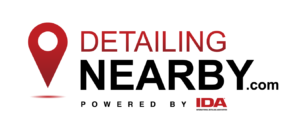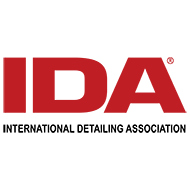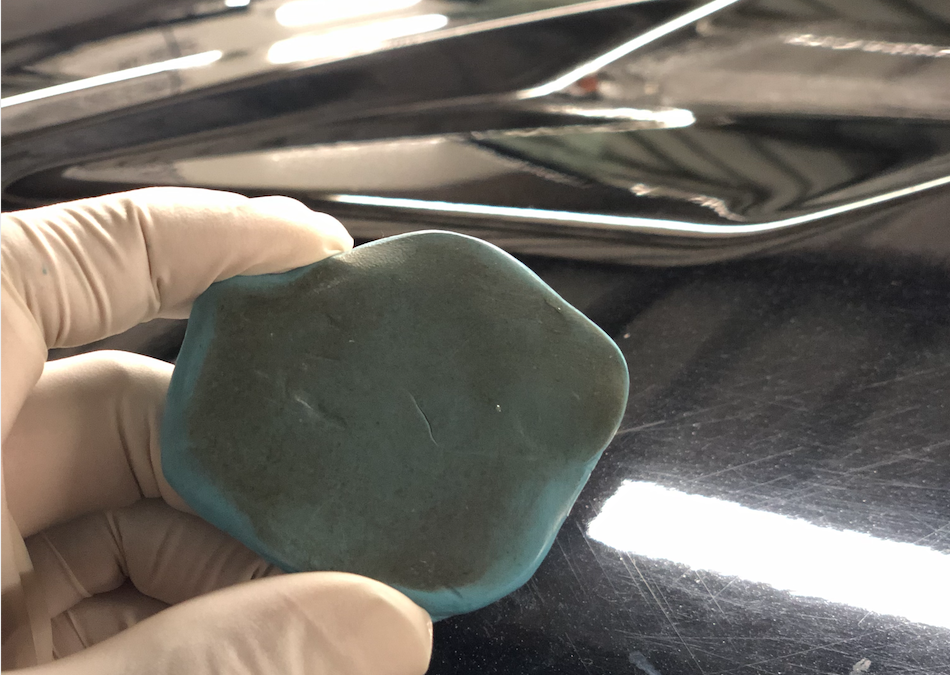By Josh Buckler, Shine Right Detailing
One of the most common questions we get is, “Why doesn’t my paint feel as smooth as when you detailed it?” There are a few things that could contribute to this. However, among the vehicles we’ve detailed, there is one factor that exists just about every time. Environmental fallout, “rail dust,” and other gunk that comes in contact with your vehicle over time can get stuck to your paint so strongly that just washing the car, even scrubbing by hand with a wash mitt, will not totally cleanse the paint. In order to get rid of the sand-like texture, a deep decontamination of the paint needs to occur. This decontamination is done with a tool called “clay bar”.
What are paint contaminants?
Let’s paint a picture to help you understand. Think of a mirror sprayed with adhesive. Then imagine throwing a handful of sand up in the air and allowing it all to lay down on the mirror. When you look at the reflection in the mirror, it’s obvious you are not going to get the normal clear image you’re used to seeing. The same way you lack total visibility of yourself, your paint does not have its total surface exposed to be protected. So, while the majority of your paint can be protected, there will be very small areas that are not unless clay barred.
Paint contaminants are anything that sticks to the paint and doesn’t come off with a typical wash. The most common examples of contaminants are rail dust, brake dust, construction zone waste, and environmental fallout.
RAIL DUST
On new vehicles, rail dust is your most common contaminant. Though it is a generic term, rail dust comes from new vehicles sitting in rail yards or ports awaiting delivery to dealerships. It covers the terms of contaminants that are in a shipyard, rail yard, or simply sitting in an industrial area for an extended period of time. The idea is that the dust from trains’ rails (metal on metal) produces metal shavings dispersed in the air. Because those fragments of dust are so tiny, when they get wet from rain, they tend to rust immediately. In fact, many times it may appear as if you have rust spots on the back of your light colored vehicle. This takes us to the brake dust scenario.
BRAKE DUST
Brake dust does not magically disappear into the air. Brake dust dissipates into the air and eventually lays on the surface of the road. Because brake dust has metal particles in it, when it gets wet it rusts almost instantaneously. This rust can often be identified by brown specks on top of white paint. That would be the most obvious circumstance. However, it is extremely predominant on every vehicle on our roadways. Some are simply more noticeable than others.
What is clay bar, and how does it work?
Let’s consider it Play-Doh for adults. The only difference is it can be much tougher to shape and form, and it actually serves a purpose beyond giggles and new creations. Clay bar is a dense piece of putty that can be torn, folded, and molded to any shape.
When using clay bar, you have to have some sort of lubricant. These lubricants are often referred to as clay lube. This helps the clay bar glide across the surface of the paint. The entire purpose of the clay bar is to grab all of the contaminants that are on top of the surface of the paint. When you glide the clay bar over the paint, you want to move back and forth in multiple directions to capture all of the contaminated areas, which is basically all areas of the surface.
As you glide the clay across the surface, contaminants will latch onto it, removing them from the area that you’re working on. It’s important to continuously fold your clay bar in order to contain all the contaminants that are being pulled into it.
It is also important to note that clay bar does not have the capability of removing scratches, swirl marks, or any imperfections in the paint that are subsurface. Clay bar is designed to only remove what is on top of the paint, not anything dug in it.
When should I clay bar my paint?
Professionals recommend that you should clay bar your paint every 6 to 12 months. To be honest, every time you plan on protecting your paint, you should clay bar. If you do not remove all of the contaminants, you will not receive total protection throughout your vehicle’s paint. All it takes is one drive in the rain, at a construction zone, and the surface will be covered in contaminants.
Besides the timeline recommended, there is a major indicator that can help you decide whether to add that step to your vehicle’s protection. After you wash the vehicle by hand, glide the back of your hand down the surface of the paint. Horizontal areas are the best areas to perform this test because the contaminants that land on those surfaces are less likely to run off, and more likely to adhere to the paint. If the surface feels rough or you can hear your hand run across it, chances are it could really use a clay bar (mechanical) decontamination.
Where do I use clay bar?
Clay bar is to be used on smooth painted surfaces only, with the exception of matte paint. Clay bar can only glide across smooth, glossy surfaces. So if you’re attempting to use clay bar on plastic trim, more than likely, it will not give you the full effect. There are other ways to protect that plastic trim from contaminants compiling/damaging the plastic.
When choosing whether to clay bar your vehicle or not, we are here to help provide expert knowledge at no cost! Our goal is truly to educate the car enthusiast on professional techniques, reasoning for service, and how to do things yourself. We are here to help!
About the Author: Josh Buckler is the Owner of Shine Right Detailing, a mobile detailing company based out of Huntingtown, Maryland, and service areas from Southern Maryland through Annapolis, Maryland. Their mobile detailing services help keep your vehicle or boat in top condition, increase resale value, and avoid costly repairs and reconditioning. They offer a wide variety of detailing packages, as well as specialty services like ceramic coatings and paint correction/restoration.


